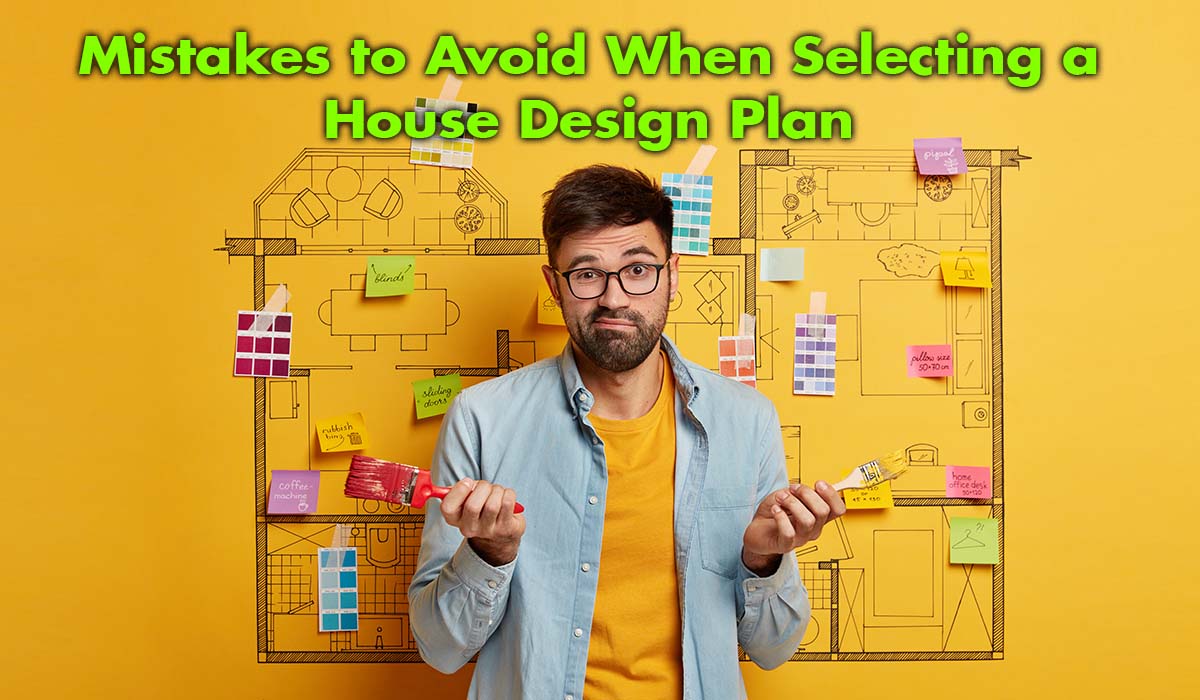Mistakes to Avoid When Selecting a House Design Plan

Selecting the perfect house design plan is one of the most crucial steps in building your dream home. However, many people make common mistakes during this process, leading to unexpected costs, inefficient layouts, or poor long-term satisfaction. In this article, we’ll explore key mistakes to avoid when selecting a house design plan, so you can ensure your project runs smoothly.
1. Overlooking Your Lifestyle Needs
One of the biggest mistakes to avoid when selecting a house design plan is failing to consider your lifestyle. A home’s layout should reflect how you and your family live daily. For example, do you often entertain guests? A spacious living room or open-concept kitchen might be necessary. If you work from home, prioritizing a quiet, well-lit office space is crucial.
2. Ignoring Future Growth or Changes
When planning your house design, it’s essential to think about the future. Families grow, lifestyles change, and your home needs to accommodate these shifts. One of the common mistakes to avoid when selecting a house design plan is not considering the potential for future additions, such as extra bedrooms or expanding living spaces.
3. Neglecting Energy Efficiency
In today’s world, energy efficiency is more important than ever. Overlooking this can lead to long-term financial and environmental consequences. Ensure that your house design includes energy-efficient windows, proper insulation, and sustainable building materials to reduce your energy footprint.
4. Choosing the Wrong Orientation
Another mistake to avoid when selecting a house design plan is neglecting the orientation of your home. A well-planned orientation maximizes natural light, provides better ventilation, and can significantly reduce heating and cooling costs. Aligning your home based on the sun’s path will make a big difference in comfort and efficiency.
5. Ignoring Budget Constraints
Building your dream home should be an exciting journey, but failing to plan your budget realistically can lead to frustration and stress. One of the critical mistakes to avoid when selecting a house design plan is choosing a design that exceeds your financial limits. Always align your design choices with what you can afford, keeping in mind additional costs like furnishings, landscaping, and permits.
If you’re unsure about how to keep track of costs or need professional guidance, you can [explore our building plan and estimation services to get expert advice.
6. Skipping Professional Advice
Although the internet provides plenty of DIY inspiration, consulting with professionals is vital. Architects, builders, and engineers can spot potential issues in your house design and offer solutions tailored to your needs. Trusting the expertise of professionals is crucial to avoid errors that could be costly later on.
7. Misjudging Room Sizes

A common issue in home design is not having an accurate sense of how big or small rooms should be. Misjudging room sizes can lead to cramped spaces or wasted areas that could have been better utilized. Visualizing the space with furniture in mind and understanding room flow is key to creating functional living areas.
8. Ignoring Outdoor Space
Your home’s outdoor area should complement the design of your house. Whether it’s a garden, patio, or yard, neglecting outdoor space is one of the most common mistakes to avoid when selecting a house design plan. Think about how you plan to use this space — for recreation, gardening, or simply enjoying some fresh air — and integrate it into your overall layout.
9. Forgetting Storage Solutions
Storage is often an afterthought in home design but plays a significant role in maintaining an organized and clutter-free space. From walk-in closets to built-in cabinets, consider how much storage you’ll need to keep your home functional and tidy. Poor storage planning is one of the key mistakes to avoid when selecting a house design plan.
10. Not Paying Attention to Traffic Flow
Your home should be easy to move around in. Poor traffic flow, such as narrow hallways, awkward room transitions, or inaccessible areas, can make daily life frustrating. A well-thought-out floor plan will ensure smooth movement between rooms, particularly in high-traffic areas like the kitchen and living room.
11. Focusing Too Much on Aesthetics Over Functionality
While it’s tempting to focus on aesthetics, don’t let it overshadow functionality. A beautiful design won’t serve you well if it doesn’t meet your needs for comfort, convenience, and efficiency. Balancing style and practicality is crucial to ensuring long-term satisfaction with your home.
12. Not Considering Maintenance Requirements
Certain design choices can make home maintenance more difficult and costly. Avoid design elements that are too complex to clean, repair, or maintain over time. Low-maintenance materials and finishes will help reduce upkeep in the long run.
By avoiding these common mistakes and carefully considering every aspect of your house design, you can create a home that meets your needs, both now and in the future. For more assistance in creating accurate building plans and cost estimates, check out our building plan and estimation services. And if you’re shopping for home essentials, visit our online store for daily-use products that fit perfectly into your new home.
FAQs: Mistakes to Avoid When Selecting a House Design Plan
Make a list of your top priorities, focusing on features that will enhance your day-to-day life while also aligning with your design vision.
Room orientation can affect natural lighting, ventilation, and energy efficiency, which all impact your home’s comfort and utility bills.
Work with a professional to create a detailed budget, factoring in all possible costs, and stick to it throughout the design process.
Yes, it’s crucial to think about potential life changes like family expansion or the need for additional space, ensuring your home can adapt over time.
Many people focus on the main living areas and overlook storage until they realize it’s insufficient. Proper storage planning can prevent this issue.

Top Building Design Trends for 2025
Introduction
Building design has evolved significantly in recent years, reflecting modern lifestyles, sustainability goals, and technological advances. In 2025, the construction...
Top Benefits of Hiring Professional Building Plan Services
In the modern construction world, hiring professional Building Plans Services has become essential for seamless execution and exceptional results. A...
